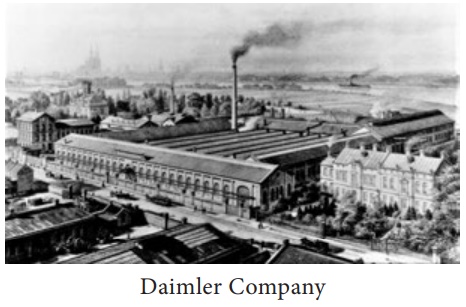Chapter: 9th Social Science : History: Industrial Revolution
Spread of Industrial Revolution
Spread of Industrial
Revolution
Industrial Revolution in France
France did not possess as much natural resources as England. The
political instability caused by the French Revolution and the prolonged
Napoleonic Wars wrecked the country. Many of those French businessmen who had
sought refuge in Britain during the Revolution, on their return to France after
Napoleonic Wars, used British technology. This helped to accomplish industrial
revolution in their country. The adoption of British-made spindles led to a
two-fold increase in French textile production during 1830-1860.
The Francois de Wendel family brought British technology to Lorraine. The family introduced steam engine in coal mining and puddling kilns for iron smelting. By the 1860s the de Wendel family employed over 10,000 workers. By diversifying its business, it entered other heavy industries such as railroad construction and shipbuilding.

The town of Mulhouse in the province of Alsace rose to prominence
for its dyes that brought many designers there. From this foundation, Mulhouse
diversified into the growing heavy industry of the region and became prominent
as a maker of machines. Saint-Chamond saw developments in iron production. In
1820, the British technology of refining cast iron began to be used in this
town.
In 1832, the first French railroad, St. Etienne–Andrezieux line
was opened. Numerous railroad lines followed. By the end of the nineteenth
century France had

The two biggest automobile companies of today’s France were started in 1891. Arman Peaugot produced his first batch of automobiles. In 1898, Louis Renault built the quadricycle, from which he began to produce in large quantities under his company, the Societe Renault Freres (Company Renault Brothers)
Industrial Revolution in Germany
Germany had the natural resources required for an industrial
revolution. Large coal reserves were located in the areas of Saar, Ruhr, Upper
Silesia, and Saxony. Iron was deposited in the areas of Erzgebirge, Harz
Mountains, and Upper Silesia again.
Germany’s main challenge was its feudal socio-political structure,
perpetuating the practice of serfdom and their unhelpful licensure policies for
establishing factories. In addition, only two major ports, Bremen and Hamburg,
had clear and secure access to the North Sea. But the most significant
challenge to Germany’s industrial revolution was its political setup. Before
1871 Germany was made of numerous German states with Prussia being the biggest.
Prussia controlled the major manufacturing towns, coalfields, and
trade routes. The state played an active role in the recovery and industrial
growth of Prussia. Prussia evolved a new tariff system after the Napoleonic
era. Accordingly, Zollverein Customs Union, comprising neighbouring German
provinces, imposed tariffs on imported manufactured goods and overseas colonial
goods. At the same time, it allowed free trade among provinces. This measure
opened a wider market and new sources of raw materials. Without the Zollverein
an industrialised and unified Germany would not have been possible.
Besides the Zollverein, financial institutions and cartels helped
the industrial growth of Prussia and the other German States. Banks provided
capital and investments to new companies. Cartels on the other hand provided
protection and stability. In other countries like Great Britain and the United
States, cartels were resented for their anti-competitive and unfair business
practices. But the Germans saw cartels as providing for the growth of small
industries. It spared them from sometimes unprofitable and self- destructing
price wars. It also provided protection in cases of price fluctuations and the
entry of foreign competition.![]()
Railroads served Germany well in its industrial development as also in its Unification. The first railroad line opened on December 1835 and ran between Nuremberg and Furth. The private sector took the initiative in constructing railroads. But when capital became scarce, the state intervened and in some provinces, nationalized the industry. In Prussia, the government took a leading part and joined the private sector in laying out networks of railroad. In 1842, the Prussian government created the Railway Fund in order to finance railroad construction project. In Prussia, Berlin became a centre of the railroad network. Railroads connected the members of the Zollverein and made trade and commerce more vibrant. In 1871, Prussia finally united Germany. Germany emerged as the most industrialised country by the end of the 19th century. Germany surpassed the home of the industrial revolution, Great Britain, and proved a competitor to the United States. In electrics, Germany offered companies like Siemens. In chemicals, Germany excelled in the production of potassium salt, dyes, pharmaceutical products, and synthetics. Companies like Bayer and Hoechst led the chemical industry of Germany. Germany became a leader in automobile industry. Daimler and Benz became the most popular brands of automobiles in Germany and the world.

Related Topics